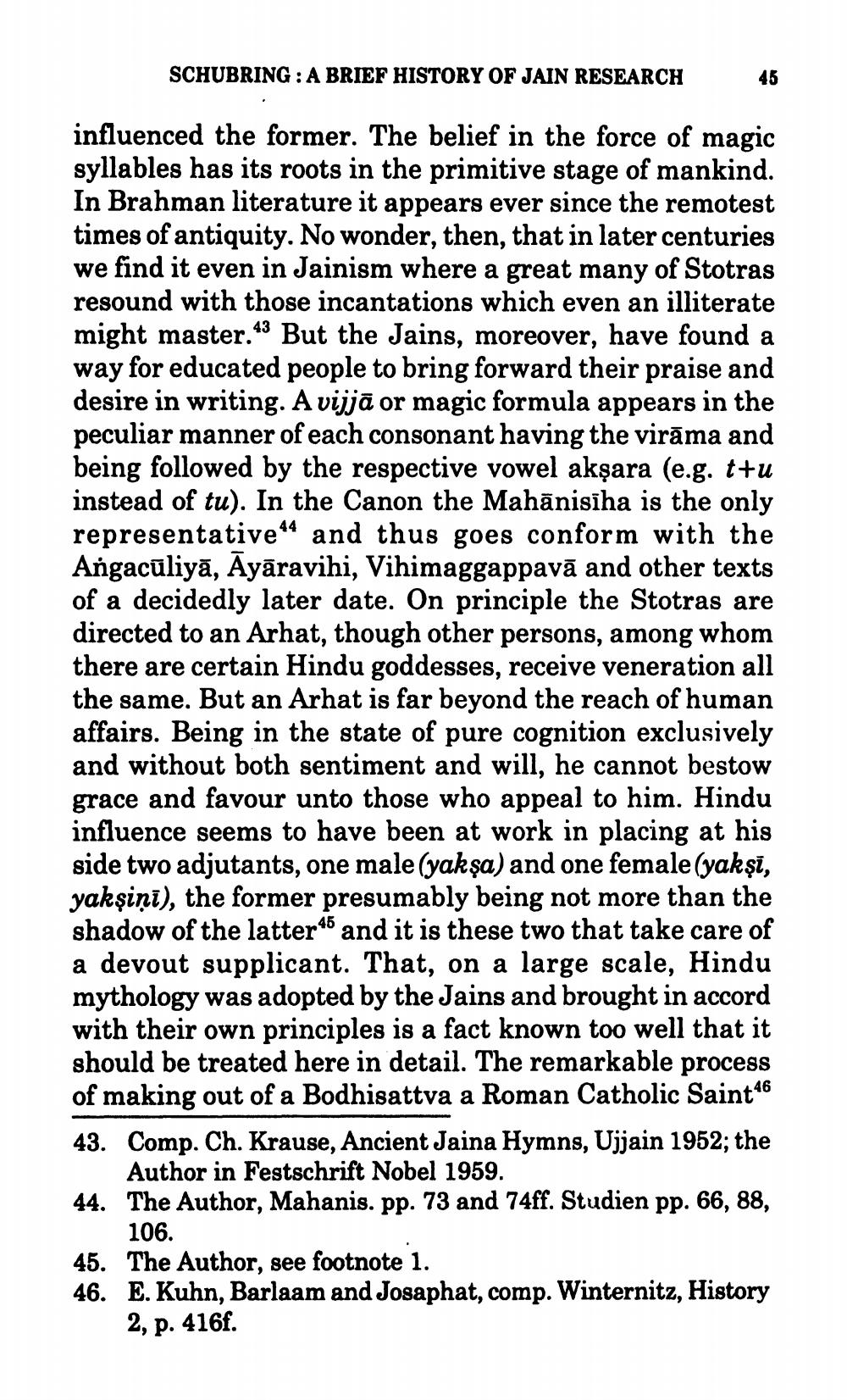________________
SCHUBRING: A BRIEF HISTORY OF JAIN RESEARCH 46 influenced the former. The belief in the force of magic syllables has its roots in the primitive stage of mankind. In Brahman literature it appears ever since the remotest times of antiquity. No wonder, then, that in later centuries we find it even in Jainism where a great many of Stotras resound with those incantations which even an illiterate might master. But the Jains, moreover, have found a way for educated people to bring forward their praise and desire in writing. A vijjā or magic formula appears in the peculiar manner of each consonant having the virāma and being followed by the respective vowel akşara (e.g. t+u instead of tu). In the Canon the Mahānisīha is the only representative and thus goes conform with the Angacūliyā, Ayāravihi, Vihimaggappavā and other texts of a decidedly later date. On principle the Stotras are directed to an Arhat, though other persons, among whom there are certain Hindu goddesses, receive veneration all the same. But an Arhat is far beyond the reach of human affairs. Being in the state of pure cognition exclusively and without both sentiment and will, he cannot bestow grace and favour unto those who appeal to him. Hindu influence seems to have been at work in placing at his side two adjutants, one male (yakşa) and one female (yakşī, yakşiņi), the former presumably being not more than the shadow of the latter and it is these two that take care of a devout supplicant. That, on a large scale, Hindu mythology was adopted by the Jains and brought in accord with their own principles is a fact known too well that it should be treated here in detail. The remarkable process of making out of a Bodhisattva a Roman Catholic Saint46 43. Comp. Ch. Krause, Ancient Jaina Hymns, Ujjain 1952; the
Author in Festschrift Nobel 1959. 44. The Author, Mahanis. pp. 73 and 74ff. Studien pp. 66, 88,
106. 45. The Author, see footnote 1. 46. E. Kuhn, Barlaam and Josaphat, comp. Winternitz, History
2, p. 416f.




